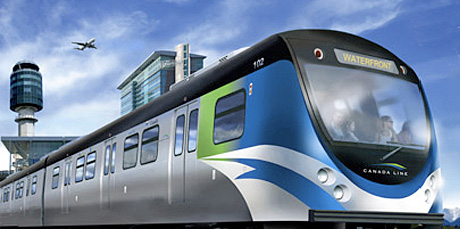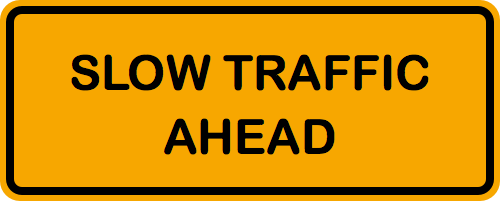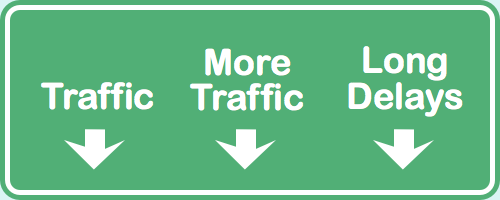
Starting today, voters in Metro Vancouver will have a chance to vote in a plebiscite on a half-percent congestion improvement tax (CIT), which will be added to the 7% provincial sales tax (PST) in the Metro area. This regional tax is meant to pay for much-needed investment of $7.5-billion of public infrastructure and public transit over the next ten years. It includes building a new four-lane Patullo bridge, a subway in Vancouver, light rail in Surrey, and more express bus services. The average household in Metro Vancouver is expected to pay about $125 per year for these improvements
‘A world-class city needs world-class public transit.’
It is interesting to note that not even opponents of the half-percent CIT argue against the need for more public transportation infrastructure. Their core arguments against the tax is that it's a tax hike and that Translink, Metro Vancouver's transportation authority, has well-known efficiency problems. Arguably, the problems with Translink can and should be alleviated using other instruments. However, reducing inefficencies at Translink are orders of magnitude smaller than needed to fund the new infrastructure projects. Rejecting the expansion of public transit in Metro Vancouver is nonsensical considering the population growth and increasing traffic in our region. Metro Vancouver is expected to grow by over a million residents over the next decades, and it is expected that there will be one new car for every two new residents. Voting NO will be a vote for traffic gridlock. The NO side is utterly silent on the need for improving our transportation infrastrucutre. With the NO side there seems to be no recognition that a world-class city needs world-class public transit. Have you never been to New York, London, Paris, or Berlin? Have you never tried their public transit systems? Do you think a modern city can generate prosperity without effective public transit? Even car-addicted cities in the United States are increasingly coming to terms with the need to grow intra-urban and inter-urban public transit.

By reducing traffic gridlock and road congestion, increased public transit helps get people to work faster and safer. The construction of the Canada Line is ample evidence that this works. Commuting time between Richmond to downtown Vancouver is all of 20 minutes. The fact that the trains are packed with commuters at rush hour speaks for itself. Vancouver was fortunate that the Winter Olympics 2010 helped secure the necessary funding. Now it is time for Vancouverites to step up to the plate and secure additional funding for more transit. Keep in mind that senior level of governments will kick in their share as well. For every dollar we raise in Vancouver, the provincial and federal government will contribute two more, roughly. Expanding public transit will do yet more than relieve traffic congestion. All the extra cars that are expected in Metro Vancouver over the next decades will contribute more and more pollution—and more so with more gridlock. Our efforts to reduce emissions over the last two decades would be reversed. Voting for public transit also means keeping air pollution in the Lower Mainland airshed in check.
‘Vote YES in Metro’s Transit Referendum.’
The CIT is supported broadly by the vast majority of city governments, many businesses and business associations, environmental and citizen groups, and even—after some initial foot-dragging—the provincial government. The majority of Metro Vancouver mayors are behind the proposal, with a (population-weighted) vote of 109–19 in favour. Only three mayors opposed the proposal: those in Burnaby and Maple Ridge (already got their skytrains) and West Vancouver (doesn't get to benefit directly). Concerns about the appropriate use of the new funds are overstated. Metro Vancouver will subject the funds collected through the tax to independent audits and public reporting.
Combining the CIT with the PST makes good sense. It exempts essential items such as groceries and children's clothing, prescription medicindes, but also restaurant meals and other services from the tax. It is more economical for businesses to remit just one tax, albeit at a diferent rate, than having to report and remit two separate taxes. It is commendable that the provincial government has stepped up to its responsibility of administering the additional tax efficiently.
Economists like myself may quibble about whether a sales tax increase is the right instrument to pay for an upgrade of our transportation infrastructure. There are arguably other policies, including road tolling, vehicle levies, and gasoline taxes, that could have delivered a double dividend: reducing congestion by pricing private transportation higher, and investing the tax revenue to provide more capacity for public transportation. However, tax efficiency matters as well, and administering the CIT comes at a low cost compared to alternatives. In principle, economists think it is best to put an appropriate price on the negative externalities from traffic: congestion (time), accidents (injuries and fatalities), vehicle emissions (health), wear and tear of roads (construction and maintenance cost). The right approach involves a mix of different instruments—ideally prices that are proportional to the (marginal) damage caused by traffic.
There has been some discussion about whether the CIT will cost the average household $125 per year, or more. The NO side has been making that case by taking the estimated revenue, $250 million, and dividing it by the number of households in Metro Vancouver. Thus, the Canadian Taxpayers Federation (CTF) estimated a cost of $258 per household per year. While the $125 figure provided by the Mayors' Council may miss some costs, the CTF figure is much too high because their estimation method is naïve. Many goods and services that are subject to PST are sold to people who do not live in Metro Vancouver, and about a third of the cost is passed on to them. Furthermore, businesses do not pass on the full tax to consumers; empirical evidence suggests that tax "passthrough" is typically less than 100%, in particular when demand for goods is price-elastic. It has been said that the CIT will be regressive: less affluent households pay proportionally more than more affluent households. That is true for all sales taxes. However, less affluent households tend to gain the most from better public transit and from less congestion, because many poorer households tend to have longer commutes to work. These households will save commuting time and costs for gasoline. Some households may be able to do without a car altogether. Thus the regressiveness of the CIT will be offset with gains that accrue more to the poorer households. Of course, other financing options would be more or less regressive than the proposed CIT. But two of the major alternatives, vehicle levies and property taxes, are also regressive.
Translink is financed through a hodgepodge of revenue: fares (about 33%), fuel taxes (24%), property taxes (21%), and other sources that include parking taxes, bridge tolls, a power levy, and contributions from the province. The CIT will add to this illustrious list. Some have complained that the CIT, like any sales tax, is somewhat regressive and puts a proportionally larger burden on less affluent people. However, improved public transit tends to benefit less affluent people more than more affluent people (who tend to drive more). While the revenue model for Translink is worth reviewing, it is not what the referendum is about. Many opponents have voiced the opinion that "there are other ways to fund the proposed projects." Of course there are: as long as someone else is paying. It is a disingenuous argument. The mayors have worked out a funding scheme within the constraints imposed by the province, and it is a workable plan. Other options are not on the table, and they won't be in the future. Residents of Metro Vancouver have to contribute their bit if they expect senior levels of governments to contribute the rest.
Some may argue that the plan for building the Broadway subway is not going far enough. The first phase of the plan only calls for a 5.8 km subway line that runs from the VCC Clark Station (where it connects to the existing Millennium skytrain lines) to Arbutus Street. A second-phase 8 km expansion from Arbutus to UBC (of which 2 km will be above grade and 6 km need to be tunnelled) is only envisioned but is not part of the current plan. What sort of rapid transit may connect Arbutus to UBC in the meantime is not entirely clear; probably an improved version of the current 99B Line. Translink conducted a UBC Line Rapid Transit Alternatives Analysis in March 2013. While a good case can be made to build the entire line in one go, the second phase may have to wait another decade or more. But you won't get the second phase if you don't vote for the first phase first. Even if the current plans are not all you and I may have wished for, it is good enough to vote YES and set us on the right track for future expansions.

The economic benefits of building a new subway in Vancouver were outlined in a report by the consulting firm KPMG in February 2013, entitled: The UBC-Broadway Corridor—Unlocking the Economic Potential. Building a subway has significant spillover effects to the local community. It benefits not only those who take the subway. It eases congestion for drivers, it leads to more urban development and densification along the corridor, and ultimately it stimulates economic growth in the region that benefits everybody through more job opportunities and higher income.
Along similar lines, a March 2015 study by the C.D. Howe Institute, Tackling Traffic: The Economic Cost of Congestion in Metro Vancouver, highlights the substantial hidden cost from congestion. When congestion slows down the movement of people in a city, it slows down sharing of services and infrastructure, finding better jobs, and learning face-to-face. Ben Dachis estimates that if the infrastructure plan was implemented today, "the people of Metro Vancouver would have higher incomes of between $500 million and up to $1.2 billion annually, or $950 per worker in Metro Vancouver, per year." This increase in economic benefits is in addition to the benefits from easing congestion. In short, the benefits from more public infrastructure are significantly larger than its costs.
The provincial government has pursued a risky strategy by putting the expansion and funding of public infrastructure to a referendum. Experience elsewhere has shown that winning such a referendum is far from a foregone conclusion. It is often difficult to convince people that investments today yield diffuse benefits tomorrow. The provincial government did not want to risk another HST fiasco by supporting what could be perceived as an unpopular general tax increase. The province passed the buck to the mayors, who struggled to find a financing formula that was either within their existing mandate, or that the province could agree to. Convincing a mostly apathetic public to support the new financing formula, with little time and little money to build the case gradually, will turn the referendum into an uphill battle. The province does not have a plan B. If the referendum fails, urgently-needed expansion of publilc infrastructure will be delayed for many years. It is therefore even more important that all provincial parties voice strong and unequivocal support for a YES vote in the referendum.
‘If the referendum fails, higher property taxes and a vehicle levy will be back on the agenda.’
I am not optimistic about the chances of the referendum succeeding. The odds are stacked against it. Polling results show the yes side softening in January and support for no surging in late February. Where transit referenda have been successful elsewhere (Seattle, Los Angeles) support has been built up over long time frames and with strong leadership. Seattle voters approved a 0.1% increase in their sales tax and a $60 annual vehicle levy in November 2014. If the referendum fails, the mayors really have only two cards left to play: increase property taxes within their jurisdiction, and agree to impose a vehicle levy. In 2013, premier Christy Clark voiced opposition to a vehicle levy, and her predecessor Gordon Campbell nixed a $122/year vehicle levy proposal in 2009. A vehicle levy is technically already within TransLink's mandate, but it will require an order-in-council from the provincial Cabinet to approve. If the referendum fails, higher property taxes and a vehicle levy will be back on the agenda.
Beyond property taxes and vehicle levies is the possibility of creating an entirely new revenue source: development charges. These are already used in some jurisdictions. Ontario has had a Development Charges Act since 1997, but it has not been used effectively for funding public transit because of built-in constraints. In the Toronto area, development charges cannot be used easily for growth-oriented, forward-looking expansions of public transit. Development charges are also not fine-tuned to individual neighbourhoods; instead they are levied at a flat rate across the city. They can amount to $50-60,000 for a single-detached dwelling. The most efficient way of using development charges is to vary them by type of property (residential, commercial, industrial) and neighbourhood characteristics (density, location). Essentially, development costs are higher in low-density neighbourhoods, and putting a higher development charge on these will curtail urban sprawl. Differentiated development charges can be used to encourage efficient patterns of development across Metro Vancouver.

If current polling is to be believed and the referendum fails, some of the blame will fall squarely on the lack of marketing. How can one expect people to vote in favour of something if they have seen and heard little about it? Advertisement is not cheap, but essential. As Stephen Quinn, host of CBC's On the Coast program, has put it in the Globe and Mail, "Show me why I should vote Yes for the transit tax." His advice rings true. Make the congestion issue relevant to people. Show us congestion. Show us what happens if congestion gets worse if we don't invest in more infrastructure. Make it visual. Make it plausible. Make it relevant.
All considered, you will not be surprised to see me join the large and illustrious group of advocates for more transportation infrastructure in Metro Vancouver. When you receive your ballot in the mail, I urge you to vote YES in Metro Vancouver's Transportation and Transit Referendum. It's an investment into our future, and one day your kids and grandkids will thank you for voting YES in the referendum. I know that my two young kids would vote for it if they could. Listen to your kids!
![[Sauder School of Business]](logo-ubc-sauder-2016.png)
![[The University of British Columbia]](logo-ubc-2016.png)